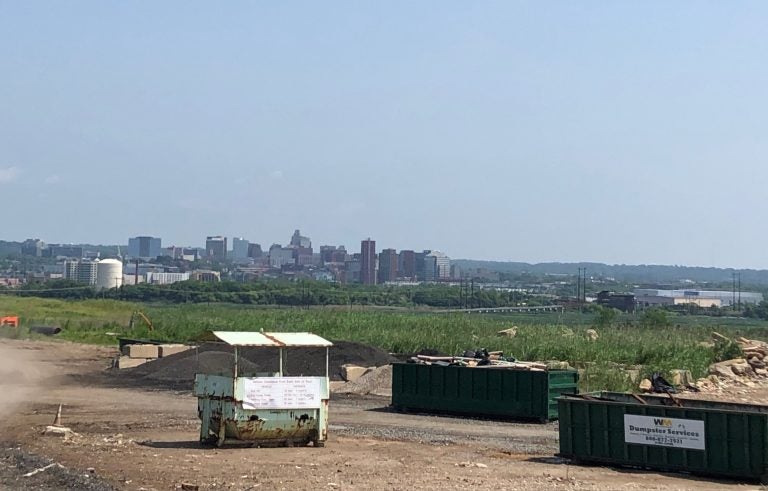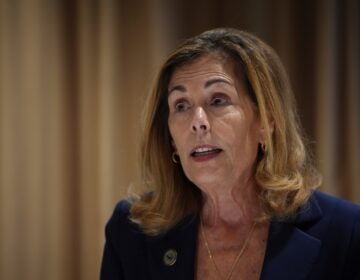Delaware landfill sues over height limit while violating toxic release permits
Waste Management’s construction landfill south of Wilmington is suing New Castle County over a new law that caps its height, even as it violates air emission permits.
Listen 0:57
The landfill for construction and demolition debris south of Wilmington is nearing its 130 foot capacity. (Cris Barrish/WHYY)
A Delaware construction landfill south of Wilmington is suing New Castle County over a new law that would limit its bid to dramatically increase how much the trash heap can grow.
But even as the landfill is accusing the government of unfair treatment, the operation has run afoul of state environmental laws.
Waste Management Inc.’s landfill off U.S. 13 near Minquadale is nearing its 130-foot height limit, so it’s asking the state to grow to 190 feet.
That application with the state Department of Natural Resources and Environmental Control is pending, and has led to protests from nearby residents, environmental activists and politicians including New Castle County Executive Matt Meyer.
In August the county entered the picture. With the support and urging of the Meyer administration, New Castle’s County Council capped the height of landfills at 140 feet.
The lawsuit claims County Council acted without evidence that water supplies or residents are in peril. Spokesman John Hambrose would not discuss the Chancery Court filing beyond saying, “We don’t believe that this ordinance was properly approved.”
Meanwhile, Waste Management is revising its application with the state and will only seek a “vertical expansion” to 140 feet — the new county limit.
While state environmental officials continue deliberating over the expansion application, regulators recently cited the landfill for exceeding its sulfur dioxide release permit every month for the past year. The pungent compound can harm the respiratory system.
The state has required a remediation plan by next month, and Hambrose said one is being developed to contain the gases. He blames the excess release on record rainfall but state Rep. Frank Cooke, a Democrat who represents the area, says it’s more evidence that the landfill is a threat.
“It’s not being a good neighbor because it’s not transparent,’’ Cooke said. “I think my neighborhood has been hoodwinked. They’ve been bamboozled in this whole issue.”

Hambrose says at 34-years-old, the landfill’s days are numbered if it can’t grow. He says the facility will need to stop accepting waste in “a few months” and shut down if the state doesn’t let it expand to 140 feet.
Should the limit be raised to 140 feet, however, it could remain in business for a few more years, Hambrose said. The initial application was to go to 190 feet to ensure it could stay open in the long run, he said.
Cooke said he supports shuttering the facility since it gets a vast majority of its debris from outside Delaware. He says in-state contractors can dump at the Cherry Landfill near the Delaware River, which does not accept out-of-state waste.
“I think it would be a good thing because 70% of the trash comes from out of state,’’ Cooke said. “Out of state construction materials can go to their own states and dump their trash. That’s what they are making their revenue on, out-of-state trash in our state.”
County Executive Meyer would not comment on the lawsuit, but an aide said the county would defend against the litigation.
WHYY is your source for fact-based, in-depth journalism and information. As a nonprofit organization, we rely on financial support from readers like you. Please give today.





